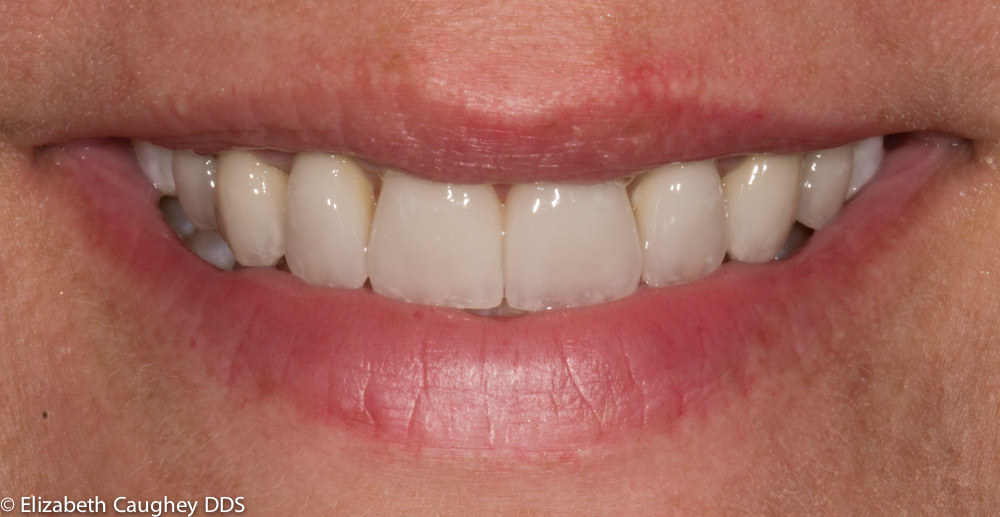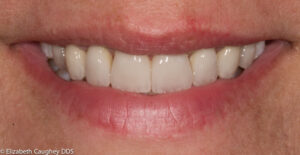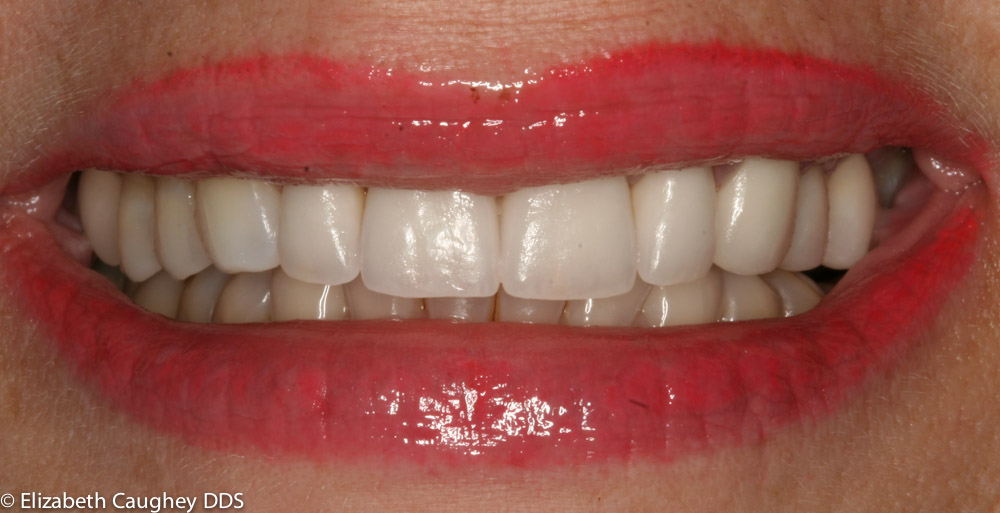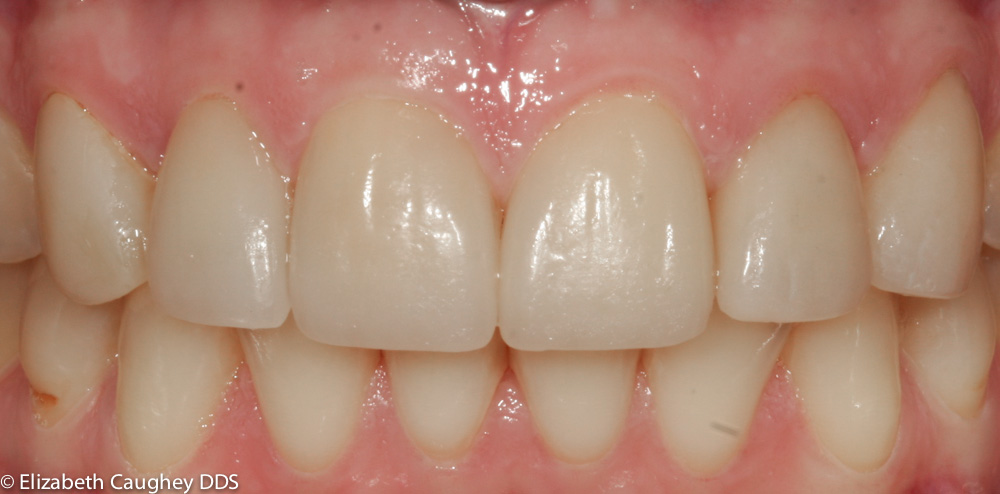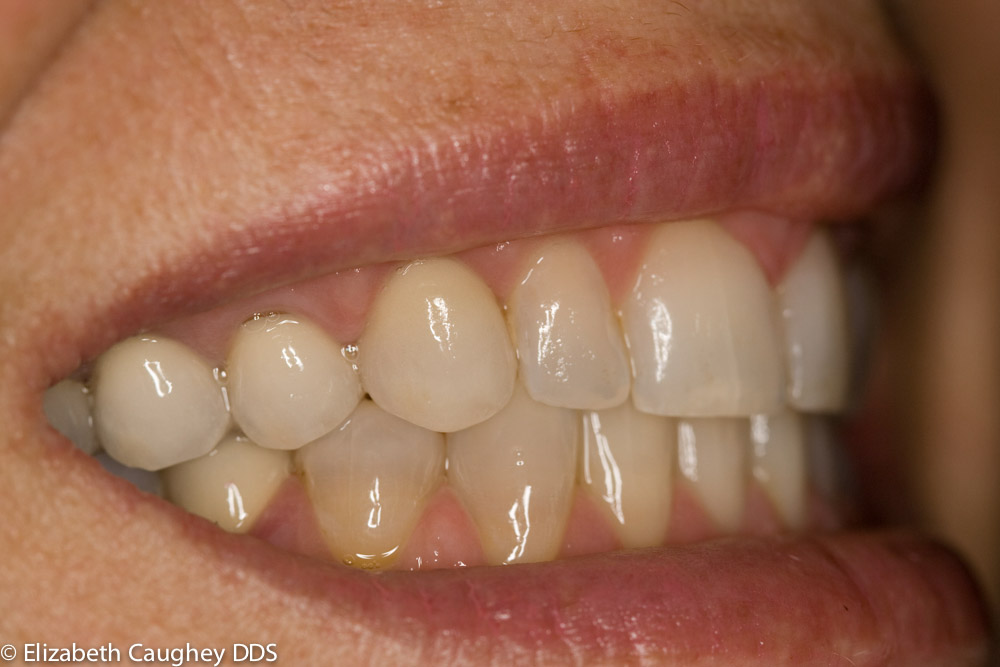
This patient’s teeth were developmentally affected by a condition called Hypo-calcification: a chalky, uneven white color and rough dull texture. Her first set of porcelain veneers were a uniform color, but much more yellow than looked right for this patient’s ruddy complexion. By the time she sought consultation, the original set of veneers had become thinned at the biting edges, and loose and stained at the gum-line edges. She chose to have the veneers replaced with hand-stacked feldspathic porcelain veneers.
As an intermediate step between her first set of porcelain veneers and the next set I would make her, we placed custom shaped resin bonded veneers. The color chosen was an average between the chalkiest spots in her natural enamel, and the yellowest tone of the first set of porcelain. The resin bonded restorations serve to provide the patient a trial experience of her new smile, before committing to long-lasting porcelain veneers.
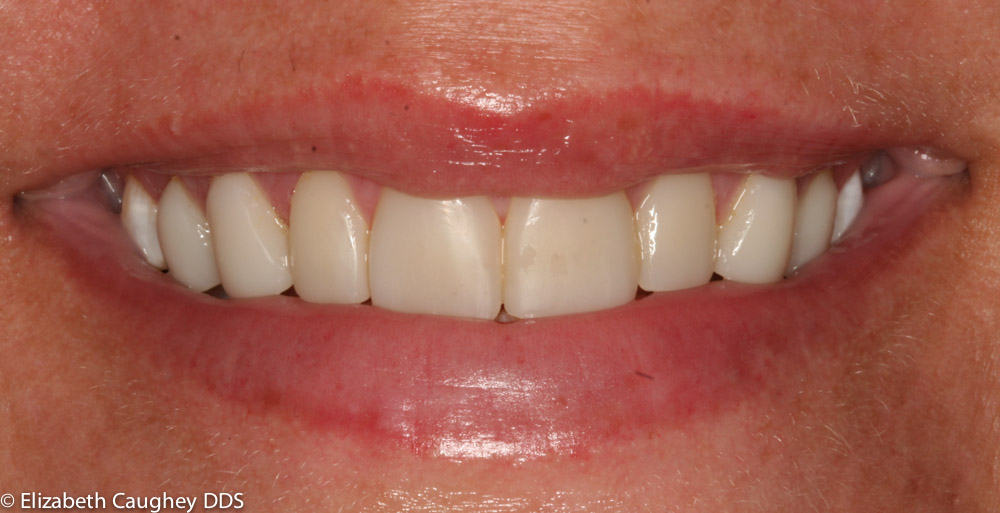
The final restorations were made of a hand-stacked feldspathic porcelain, building in reflective specks of bright white line angles and translucent edges to create a very natural outcome. The patient is thrilled with the aesthetic outcome, and has never felt her bite so comfortable in 20 years!
